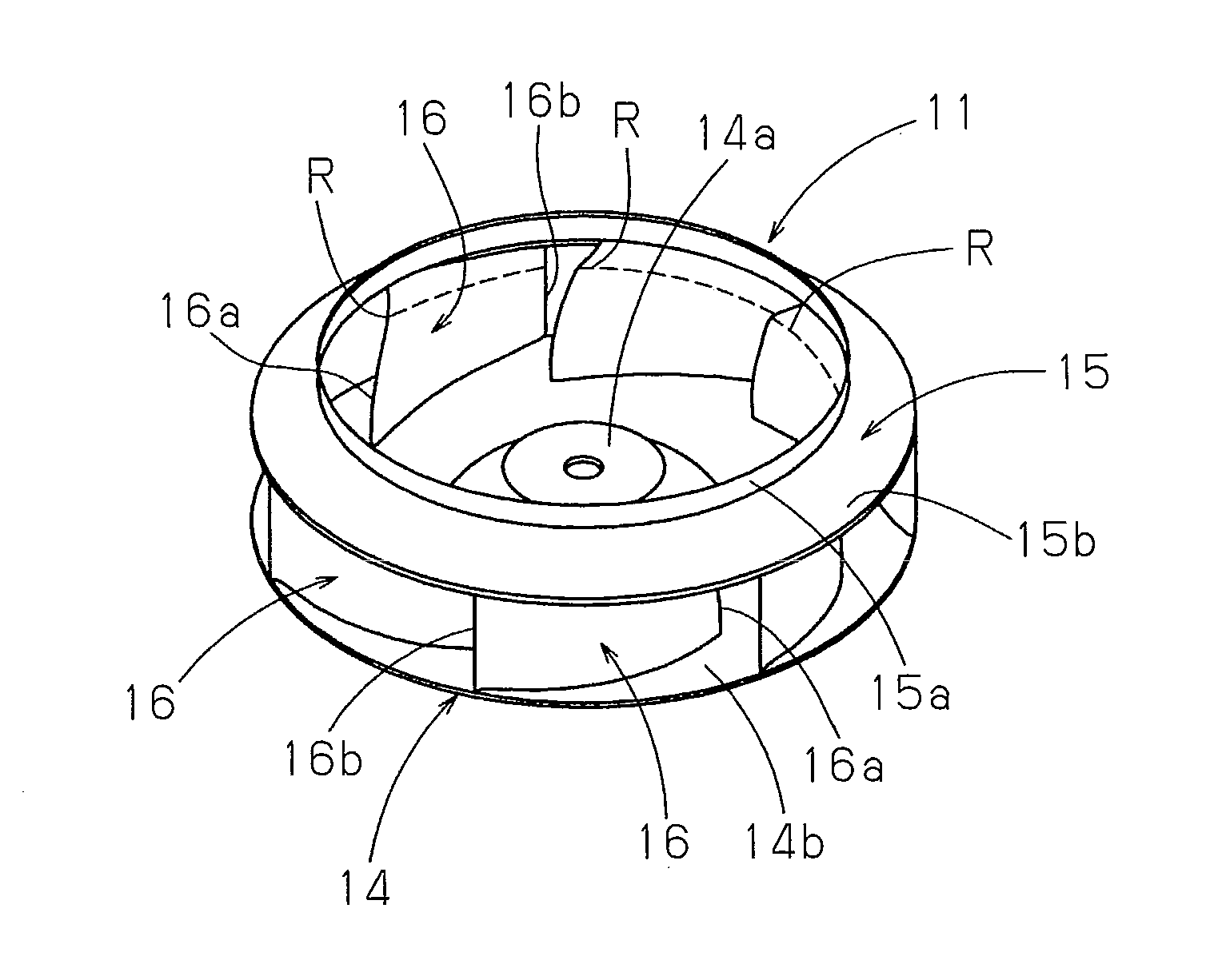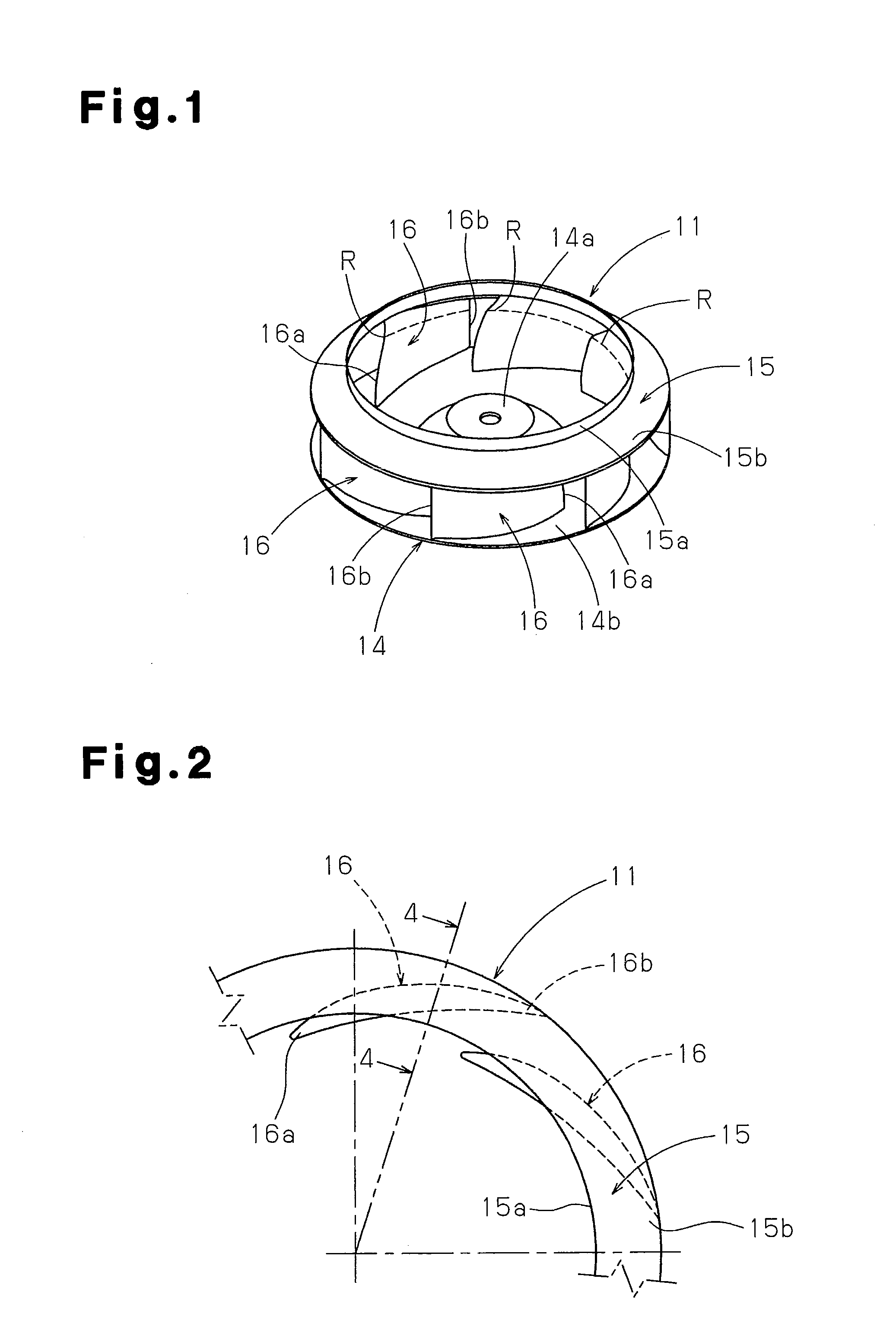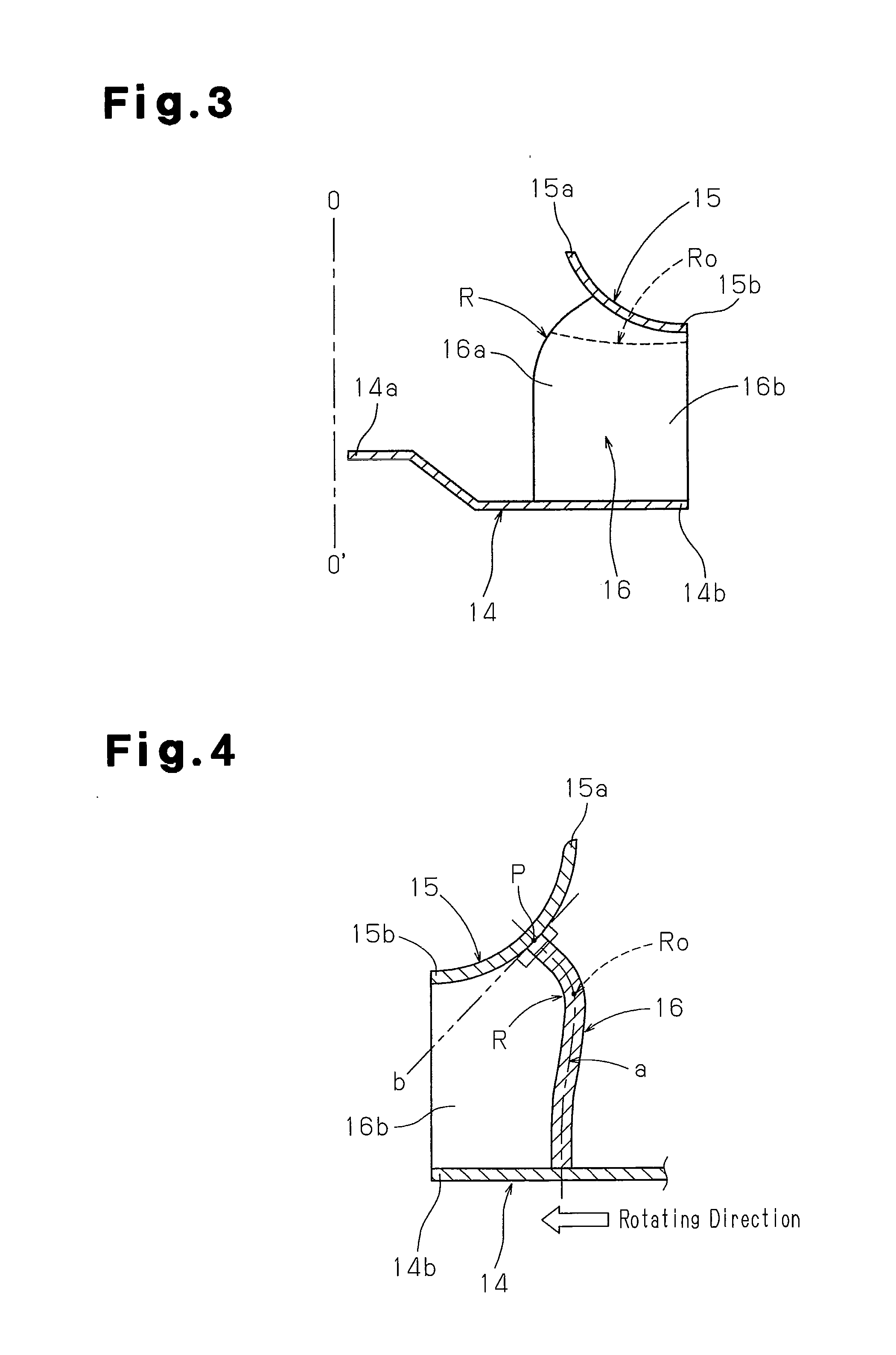Centrifugal fan
a centrifugal fan and fan body technology, applied in the direction of liquid fuel engines, vessel construction, marine propulsion, etc., can solve the problems of deteriorating the original performance of each blade, and achieve the effect of reducing air turbulence, intense energy, and effective reducing fan nois
- Summary
- Abstract
- Description
- Claims
- Application Information
AI Technical Summary
Benefits of technology
Problems solved by technology
Method used
Image
Examples
first embodiment
[0065]A centrifugal fan (a turbofan) according to a first embodiment of the present invention, which is employed in an indoor unit of a ceiling embedded air conditioner, will be explained with reference to FIGS. 1 to 5.
[0066]As illustrated in FIGS. 1 to 3, a centrifugal fan (a turbofan) 11 has a circular main plate (a hub) 14, a tubular side plate (a shroud) 15, and a plurality of blades (rotor blades) 16, which are arranged between the main plate 14 and the side plate 15. The main plate 14 is fixed to a rotary drive shaft 13a of a fan motor 13 illustrated in FIG. 31. The blades 16 are arranged at predetermined blade angles and spaced apart at predetermined intervals in the circumferential direction. The side plate 15 has two opening ends having different outer diameters. One of the opening ends of the side plate 15 forms an air inlet port, which guides air in centrifugal directions in an impeller. An air outlet port portion 6c of a bellmouth 6 is loosely received in an air inlet en...
second embodiment
[0075]A centrifugal fan according to a second embodiment of the present invention, which is used in an indoor unit of a ceiling embedded air conditioner, will now be described with reference to FIGS. 6 to 10.
[0076]As illustrated in FIGS. 6 to 10, the second embodiment has an additional curved portion formed close to the joint portion between each blade 16 and the main plate 14 of the centrifugal fan according to the first embodiment. This suppresses a horseshoe vortex produced on each surface of the blade 16 at the joint portion between the blade 16 and the main plate 14.
[0077]With reference to FIGS. 36 to 38, when each blade 16 extends perpendicular to the flat main plate 14 as in the case of the first embodiment illustrated in FIGS. 1 to 5, a horseshoe vortex is produced around the position at which the main plate 14 and the leading edge 16a of the blade 16 cross each other. As the horseshoe vortex is generated and increased, the original airflow moving along the blade 16 is inter...
third embodiment
[0081]A centrifugal fan according to a third embodiment of the present invention, which is employed in an indoor unit of a ceiling embedded air conditioner, will hereafter be described with reference to FIG. 12.
[0082]As illustrated in FIG. 12, the third embodiment is characterized in that a horseshoe vortex suppressing portion, which is similar to that of the second embodiment, is formed by a forward-swept blade structure S. The forward-swept blade structure S is formed by projecting a portion of the leading edge 16a of each blade 16 close to the main plate 14 toward the center of the main plate 14 by a predetermined dimension.
[0083]In this configuration, as represented by the arrows of phantom lines in FIG. 12, a drawn airflow (a main airflow) applies pressing force to both surfaces of each blade 16 at the joint portion between the leading edge 16a of the blade 16 and the main plate 14. This either makes it difficult for a horseshoe vortex to be generated or reduces the size of the...
PUM
 Login to View More
Login to View More Abstract
Description
Claims
Application Information
 Login to View More
Login to View More - R&D
- Intellectual Property
- Life Sciences
- Materials
- Tech Scout
- Unparalleled Data Quality
- Higher Quality Content
- 60% Fewer Hallucinations
Browse by: Latest US Patents, China's latest patents, Technical Efficacy Thesaurus, Application Domain, Technology Topic, Popular Technical Reports.
© 2025 PatSnap. All rights reserved.Legal|Privacy policy|Modern Slavery Act Transparency Statement|Sitemap|About US| Contact US: help@patsnap.com



